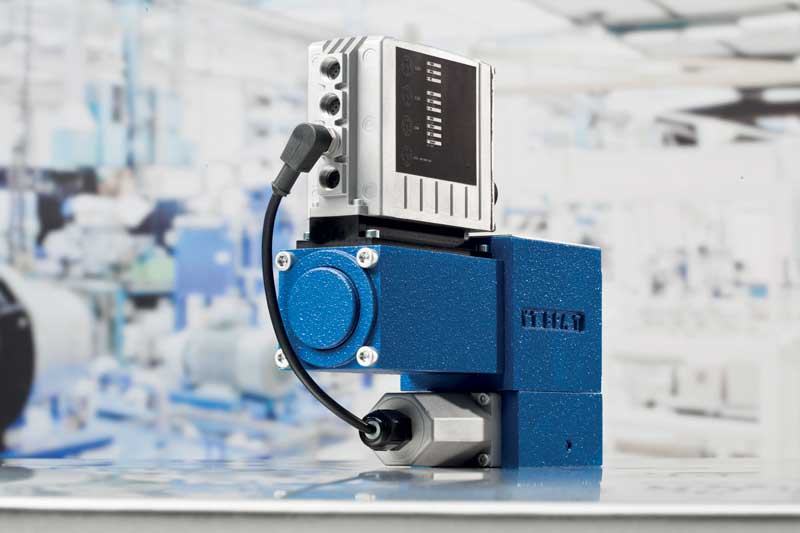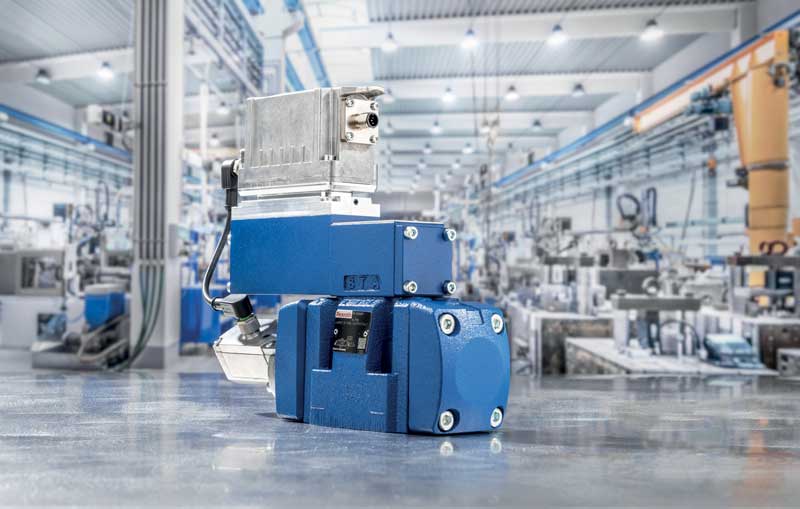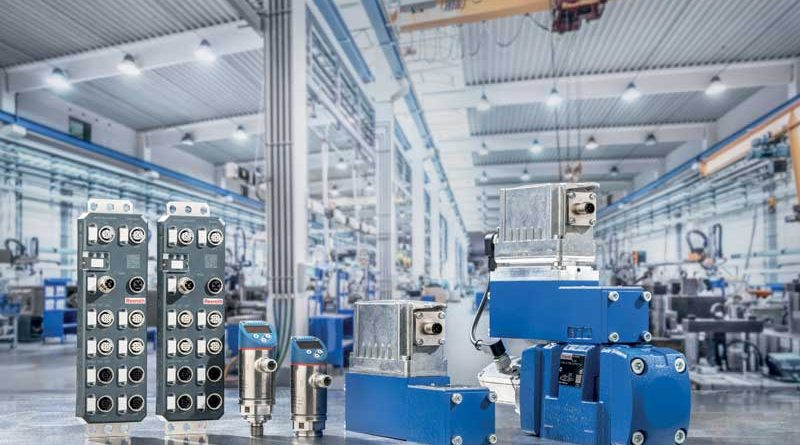Towards the Digitalisation of Hydraulic Systems
Greater productivity and efficiency, less TCO and TtM: the road towards digitalisation involves hydraulic valves. Bosch Rexroth’s connected solutions are transforming machine production in a Connected Hydraulics scenario. An example? The Fieldbus proportional valves with Multi-Ethernet interface and IO-Link, that simplifies installation, maximises productivity and minimises downtime.
The field of hydraulics, which some may have thought of as already fully-grown, still manages to surprise us even today with its capacity to completely reinvent itself to offer greater precision and vitality, enhanced compactness, boosted energy efficiency, easier use, but also improved simplicity and flexibility, from integration through to application.
A real revolution in the hands of industry, which can benefit from the advantages that have previously only been available for electronics. We’re currently seeing a switch from classic hydraulic systems with an analogue interface to those equipped with a digital interface.

Hydraulics + electronics: a new era for industrial handling
The digitalisation of hydraulics opens up a new era for industrial handling, putting an end to the gulf between hydraulics and electronics. The two technologies have begun to work together in multi-technological architectures that offer greater freedom to both machine manufacturers and end users.
The arrival of the digital age has finally brought about improvements in hydraulic components to eliminate their weak points and optimise drive control. In addition, the digital set-up permits new functions regarding automation, onboard safety and monitoring of the
status and interconnection.
The hydraulics of the future, in fact, will be able to communicate and be connected, allowing the companies to reach their 4.0 transformation. Bosch Rexroth has always been committed to bringing innovation into the industrial sector, and wants to be one of the leading backers of the hydraulic revolution taking place, offering ground-breaking technologies in the sphere of Connected Hydraulics.
Creating value and improving performance with connected hydraulics
In the world of Connected Hydraulics Bosch Rexroth opens the way to connectivity in a cost-effective and digital manner with its Multi-Ethernet proportional valves. Thanks to smart digital onboard components, all the control functions can be decentralised. The position, force and speed of an axis can be managed with the aid of simplified system architecture with ever increasing performance specs. The Fieldbus proportional valves with Multi-Ethernet interface and IO-Link are the answer to growing market demands, as well as being an investment for the future development of companies. In the next 10 years in fact, digital proportional valves will take the place of those with an analogue interface, currently used in 90% of all applications.
The digitalisation of hydraulic systems doesn’t involve particularly high or additional costs. It’s a technological evolution of the market, that’s already showing results thanks to the marked advantages of digital hydraulic solutions for machine production.

The advantages of electronics in the world of connected hydraulics
Bosch Rexroth’s connected hydraulics offers a number of advantages. Design simplification is certainly among them. Bosch Rexroth connected hydraulics solutions, in particular digital valves, simplify the design task and boost the value of machines. This is obtained with the help of simulation tools and online configurators. Thanks to digitalisation, machine manufacturers can work with the most high-performing, compact and flexible components that are easy to connect and open to all the communication standards, with greater freedom in the design phase. The digital revolution also gives technical offices access to numerous online configuration and simulation tools for optimising the development phase. This simplification is also ensured by collective intelligence and integrated STO (Safe Torque Off).
These innovations help reduce development costs and the time needed to bring new machines onto the market. What’s more, with a wide range of models ready for customisation, manufacturers can quickly personalise a specific component to meet their own application requirements.
Production efficiency, reduced TCO and energy savings are among the other benefits offered by connected hydraulics.
Bosch Rexroth’s next generation hydraulic components can reduce process cycle times whilst still maintaining optimum reproducibility. With the connected components and the data available, companies will be able to optimise the time needed to modify the process parameters, making their machines even more flexible.
The outstanding flexibility of digital valves means they can be used on both new machines and existing ones, modifying the control parameters to suit the production process in question. The use of digital solutions also enables to improve the OEE in terms of enhanced system efficiency, quality and availability. Optimized commissioning is another plus. The range of Bosch Rexroth connected hydraulic components is designed to be perfectly combined with customers’ machines, reducing space and times as well as installation costs. ‘Plug and run’ systems (hydraulic control centres like CytroPac, CytroBox, SHA hydraulic axes and IAC valves) means manufacturers can now gain time in the installation phase. In the components parameterisation phase, control and commissioning support functions integrated in the controller allow hydraulic personnel to work more easily.
More transparent machine data also mean reduced machine downtime.
By closely monitoring the work of the machines and passing on the performance data in real time, digital valves lengthen the lifespan of a machines, notably reduce downtime and enable the implementation of innovative condition monitoring and predictive maintenance solutions.
Status monitoring, availability of wear data and remote diagnostics are made possible by the sensors built into the components and into the systems.
Even the software that’s vital for these functions is undergoing equally rapid development, with truly revolutionary output: the acquisition of data in real time, the integration of these data in various IT systems, and self-learning models. This digital approach to maintenance means you can reduce machine downtime and service interventions on the lines, increasing overall equipment effectiveness (OEE), and also changing the way to manage the warehouse stock and reorder spare parts. The component to be replaced will be ordered automatically, even before the fault occurs, thereby avoiding any sudden machine downtime.

